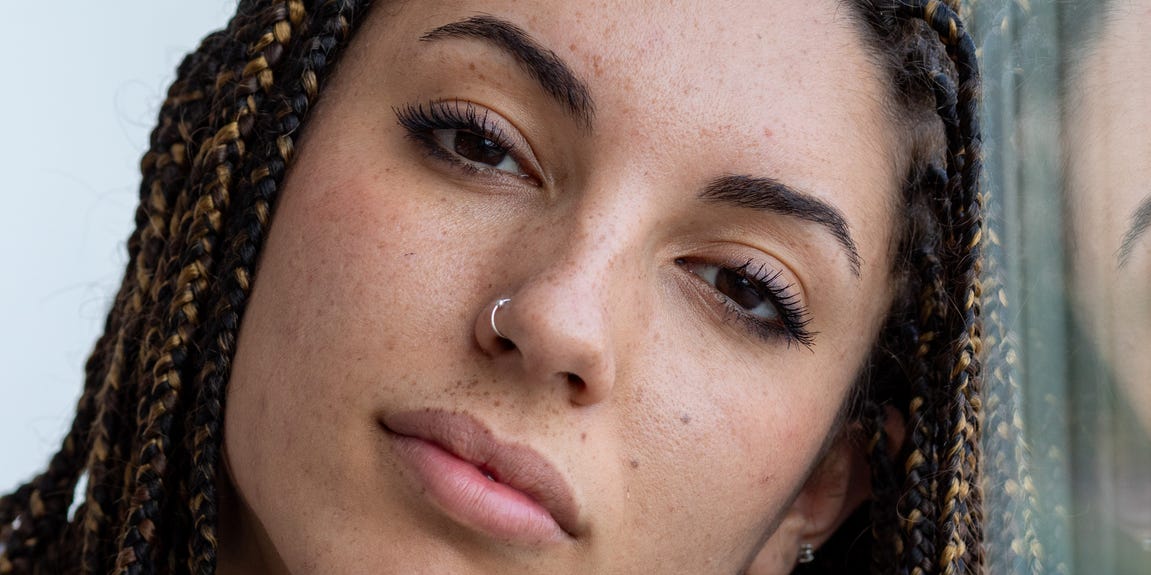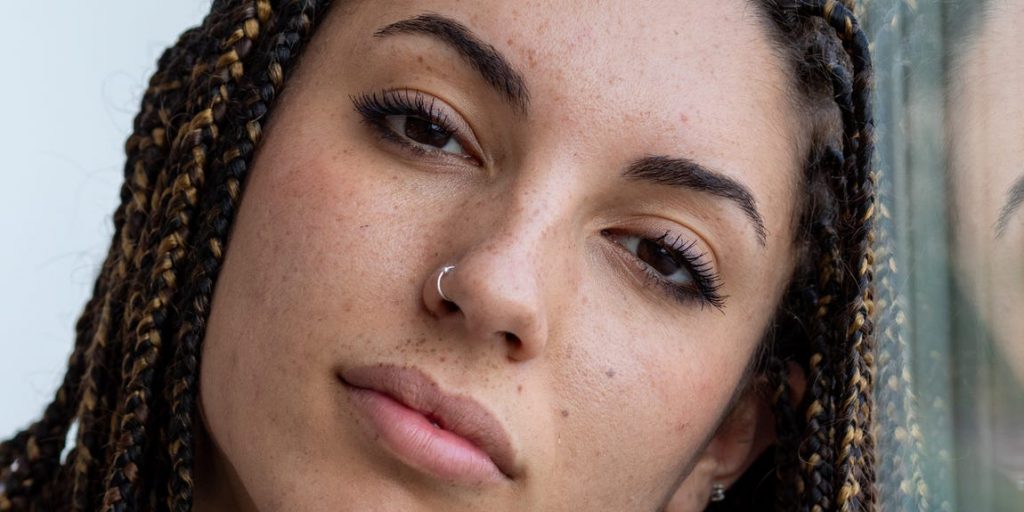
Giulio Fornasar/Getty Images
- A nose piercing bump can be caused by a keloid, a granuloma, tissue damage, and more.
- An allergy to the metal in your piercing, especially nickel or cobalt, can also cause a bump.
- A granuloma will go away on its own, but you might have to see a doctor to remove a keloid.
- Visit Insider's Health Reference library for more advice.
A nose piercing can be a cute accessory, but it's not so cute when a bump pops up on the skin next to your piercing.
You might be able to treat the bump at home, but other times it could be the sign of a dangerous infection that needs medical aid.
Here are five causes for that bump and what to do in each case.
1. Allergic reaction
"Allergic reactions cause inflammation and swelling, which can create a bump," says Hadley King, MD, a board-certified dermatologist, and clinical instructor at the Weill Medical College of Cornell University.
Your body views the piercing as an invader and may react by causing itching, swelling, and blistering at the site.
An allergic reaction to a piercing is often caused by an allergy to the metal in the jewelry. You can be allergic to any metal, but the most common metal allergies are nickel and cobalt.
Nose piercing allergy bumps are generally small but may be surrounded by a rash of red, scaly skin.They can be incredibly itchy and tend to be more irritated than painful.
How to treat it: "Hypoallergenic piercings should be used, such as surgical steel or titanium," King advises. Switching to a less irritating metal can allow your skin to calm down and get rid of the nose bump. The reaction can take two to four weeks to fully fade.
2. Granuloma
A granuloma is a reddish bump that appears when your immune system forms extra blood vessels around a foreign object like a piercing. Granulomas are usually less than a centimeter wide and they tend to show up on or right next to the piercing site.
The granuloma acts as a barrier to protect your body, says King.
Granulomas on nose piercings are often red or brownish-black, feel tender to the touch, and may bleed easily.
How to treat it: If you have a granuloma, it's best to leave the piercing alone and let your body heal on its own.
Don't switch out your nose jewelry and don't move it any more than is needed for cleaning, King says, as this can interrupt the healing process and cause irritation. Granulomas can take a few months to fade on their own, or you can see a dermatologist to discuss treatment options.
If you need to rotate the jewelry for cleaning, make sure the area is wet first so it moves with less friction.
3. Infection
If you don't clean a new nose piercing regularly, bacteria can get into the open wound and cause an infection. Most often, you'll have redness and swelling around the infected area and your nose may feel extra tender.
You may develop a small red bump around the piercing, particularly if there is any trapped pus under the skin.
How to treat it: Some infections may be dangerous if you don't get medical treatment. "If there are signs of infection such as pain, throbbing or pus, the area should be evaluated by a doctor," King says. To avoid infection, make sure to clean your piercing twice daily with a saline solution.
4. Keloid
A keloid forms when your body produces too much scar tissue during the healing process, King says. They look like firm, raised scars and can be flesh-colored, reddish, or darker than your skin tone. Keloids generally don't hurt but can become irritated if they rub up against your clothes.
You're more likely to develop a keloid if you have a genetic predisposition or you have a darker skin tone.
How to treat it: If your nose bump is from a keloid, then you should remove the piercing right away. This may help slow your body's exaggerated healing reaction.
Keloids usually don't go away on their own, so you'll have to see your doctor to treat it. A dermatologist can freeze the growth, inject steroids, or use laser therapy to help it heal. Depending on which treatment you use, it can take a few months for keloids to be fully treated. Even after treatment, the skin may not go back to it's normal appearance, but the keloid should be reduced.
If you're prone to keloids, you may have to give up your nose piercing and know that future piercings may also cause keloids, so it's probably best to avoid them.
5. Tissue Damage
"Damaged tissue can become inflamed and swollen, creating a bump," King says.
This type of bump is generally reddish, puffy, and very painful. The size of the bump will depend on how much tissue was damaged.
The skin on your nose is sensitive and can be easily damaged if you are too rough on a new piercing. This can happen from changing the jewelry too soon or even wiping your nose forcefully.
How to treat it: If the tissue damage was minor, such as from a minor blow to your nose, you likely won't need to see a doctor and the bump should improve with time. If there is significant bleeding or intense pain, see your doctor to determine what type of treatment you need.
How to care for your nose piercing
You should clean your piercing at least twice per day with a solution of water mixed with antibacterial soap or salt. You should keep this up for at least two months, or until the piercing no longer feels sensitive to the touch. In some cases, nose piercings can take up to six months to heal.
Insider's takeaway
Nose piercing bumps are an unpleasant side effect, but you can often get rid of them on your own or with help from your doctor. Cleaning the piercing, using hypoallergenic metals, and not touching the area can all help to get rid of nose bumps.
See your doctor if you have any concerning symptoms like excessive bleeding and swelling. And to prevent future bumps it always helps to, "have piercings done by a reliable and experienced professional," King says.

